Kendo: The Way of the Sword and the Samurai
Kendo, a Japanese martial art otherwise known as Ken Do or ‘the way of the sword’. It is a sword-based martial art with roots in Japanese traditions, derived from the teachings of ancient Samurai. Kendo is synonymous with a time when honor, loyalty, and bravery meant everything.
This article explores the art of Kendo, highlighting its techniques, philosophy, and evolution from traditional combat to modern sport. Whether you’re curious about starting Kendo or advancing your practice, you’ll find the guidance you need right here.
Exploring the Essence of Kendo
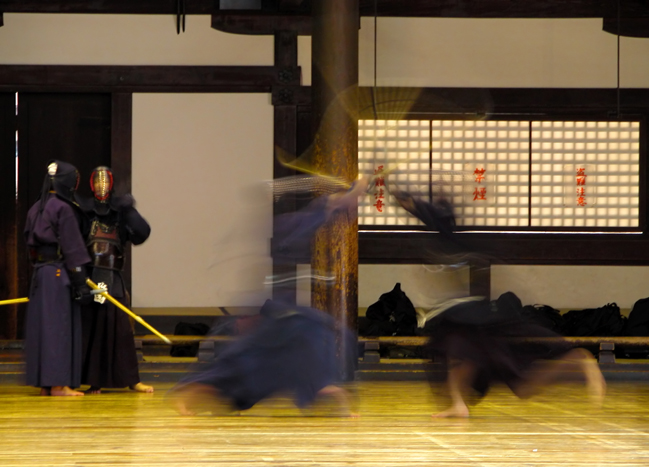
Kendo, translating directly to ‘the way of the sword’, is more than just a martial art; it represents a way of life deeply rooted in Bushido traditions. Bushido is a Samurai code and philosophy on how one should live their life. It is often called ‘the way of the warrior’ as it reflects the values and spirit of the Samurai lifestyle. Values such as honor, bravery, and loyalty are taught through the concept of Bushido. Although samurai no longer exist among us, Kendo, as a sport and martial art, aims to develop:
- character
- dignity
- technical skill
- physical capability
Kendo practitioners, or Kendokas, learn to wield the bamboo sword, or shinai, but the training goes far beyond the mastery of sword fighting. The core of Kendo lies in the harmony of the mind, spirit, and technique, a philosophy that requires years of dedication to the martial art.
The essence of Kendo isn’t confined within the four walls of a dojo. It is intended to extend into everyday life and teach students values that contribute to personal growth. Kendo is a journey of self-discovery and personal refinement, a path that aligns the mind, spirit, and body in a quest for constant self-improvement.
The History and Evolution of Kendo

The discipline of kenjutsu, practiced by Samurai warriors for centuries, is where Kendo originated. Japan’s Muromachi Period saw the emergence of various schools of swordsmanship. These schools refined and diversified techniques as the craftsmanship of Japanese swords evolved. Samurai practice, along with Kenjutsu and the many other schools of swordsmanship, laid the foundation for what would become modern Kendo. Each one contributes to the art of Japanese sword fighting in its own unique way.
The Edo period was a great advancement in the history of Kendo, marking a shift in the philosophy of swordsmanship towards personal development. The Shotoku era also brought about the introduction of practice methods using bamboo swords and protective equipment, the precursors to modern Kendo. The Japanese police played a vital role in this era, standardizing and teaching Kendo, which previously faced a ban alongside other Japanese martial arts due to their wartime associations.
Despite the ban, Kendo persevered and resurged stronger and more refined than ever. It evolved from a martial art focused on combat designed for war into a discipline emphasizing character development, self-discipline, and the pursuit of perfection through the mastery of the sword. This evolution from a combat-based fighting system built for war to a disciplined martial art and way of life was a drastic change in the essence of Kendo. This evolution showed that Kendo was part of the Japanese spirit, and even a change in the way it was used could not stop the practice of the way of the sword.
Fundamental Elements and Techniques of Kendo Training
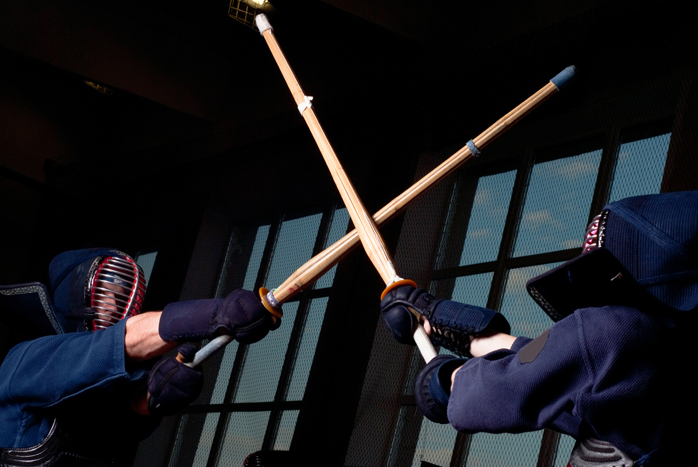
The journey into the world of Kendo begins with the learning of rei-ho, a greeting that shows respect and discipline for Kendo. These values of respect and manners are just as important as technical skills in Kendo training. In Kendo, the physical and mental are inseparable. The unification of mind, spirit, and technique is central to Kendo’s philosophy; this means even basic greetings and manners like rei-ho are vital to the dojo.
Kendo is a structured discipline where practitioners advance through a systematic progression of skills. The training starts with mastering basic movements and gradually moves to more complex techniques and strategies. Learning these techniques requires dedication, discipline, and a willingness to continuously practice.
Kendo is rich with a variety of techniques, each with its own unique form and application. These techniques are not only physical movements but also represent the strategic and philosophical aspects of Kendo. Some of the fundamental techniques include:
- Men-uchi: A strike to the head, which is considered one of the primary techniques in Kendo. The practitioner raises the shinai above their head and strikes down on the opponent’s men (head protector).
- Kote-uchi: Targeting the wrist, this technique requires precision and timing. The kendoka aims to strike the opponent’s kote (wrist protector) with a swift motion.
- Do-uchi: A technique that involves striking the side of the opponent’s do (torso protector). It requires the practitioner to swing the shinai in a diagonal motion to hit the target area effectively.
- Tsuki: A thrusting technique aimed at the throat, specifically the tsuki-bu (throat protector). This is a more advanced technique and is executed with caution during practice due to its potential danger.
- Nuki-waza: A defensive technique that involves evading the opponent’s strike and simultaneously counter-attacking, usually targeting the men or kote.
- Debana-waza: These are techniques initiated just as the opponent begins an attack. The kendoka anticipates the opponent’s move and strikes a target area, such as men, kote, or do.
- Oji-waza: Counter-attack techniques that are performed in response to the opponent’s attack. This includes various methods like kaeshi-waza (counter-strike waza), suriage-waza (sliding waza), and uchiotoshi-waza (striking down waza).
- Hiki-waza: Techniques executed while moving backward from the opponent. These strikes can be to the men, kote, or do, and require good balance and control.
- Kiri-kaeshi: A practice drill that involves consecutive strikes to the men, alternating between left and right strikes, and is essential for developing striking speed and precision.
These techniques form the core of Kendo practice, and they are supposed to be perfected over time through dedicated training and sparring. Mastery of the Kendo techniques is not only about physical execution but also about understanding the timing, distance, and spirit in which they are delivered.
The Kendo Kata: Choreographed Combat
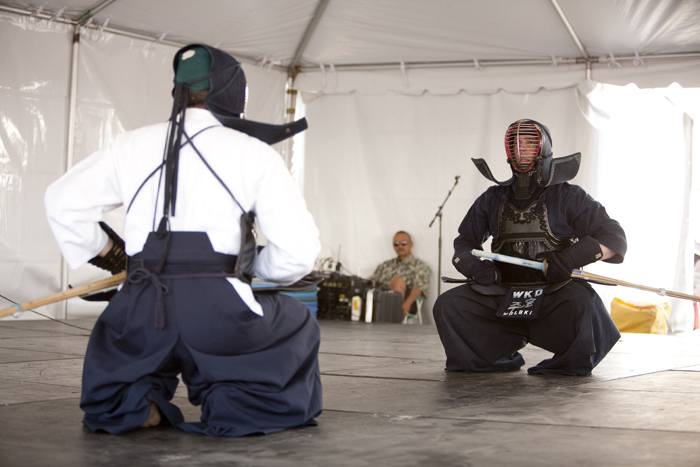
Kendo kata is a form of choreographed sword fighting that goes beyond the physical aspect of training. The kata is a series of predetermined movements; this makes it very challenging to learn because the timing and precision of the movements need to be performed well.
The difficulty in learning Kendo kata is having a great deal of mental awareness and precision as the kata is practiced with a fellow Kendoka. Kata is done in pairs, and discipline and cooperation are required by both Kendokas; if either one fails to remember the kata, it falls apart.
Kendo Kata differs from forms in other martial arts primarily due to its focus on precise choreography that reflects the deep philosophical and moral teachings of the samurai. Unlike the solo forms or ‘kata’ seen in karate or taekwondo, which can be practiced individually, Kendo kata is always practiced with a partner, requiring a unique synchronization of movement and intent. This partnered practice emphasizes not only the physical execution of techniques but also the connection between the practitioners. The meditative aspect of syncronizing Kata with a partner promotes respect amongst Kendokas in the dojo.
Furthermore, Kendo Kata is not just a physical exercise but a method of preserving the techniques and spirit of ancient swordsmanship. Each movement and stance is inherited from the wisdom of centuries-old sword-fighting traditions, making it a bridge between the past and present. The precision and mental awareness required in Kendo Kata also serve as a meditative process, allowing kendokas to refine their focus and follow the principles of Bushido.
The Kodachi-no Kata is a particular form of Nihon Kendo Kata that emphasizes the integrity of the kendoka. It teaches that true skill emerges from a full-hearted approach, regardless of the sword’s length. The Kata thus brings to light the essential competency in both long and short swords, embracing the notion that size variance requires the same fundamental approach.
Kendo Kata requires discipline and personal growth; it is a path that aligns the mind, spirit, and body. It allows Kendokas to search within themselves for the discipline they need to master these forms. Kata is perhaps the most difficult yet rewarding aspect of Kendo.
Stepping into the Dojo: How to Begin Kendo Practice
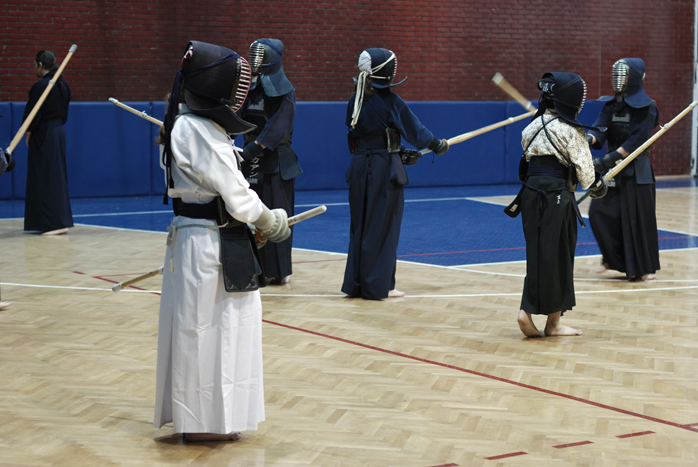
Stepping into the world of Kendo requires guidance from a qualified instructor. Kendo instructors can guide you through the proper techniques, etiquette, and philosophy of the art, providing the foundation for your Kendo journey. Regular attendance at a dojo is also essential. At the dojo, you can learn correct etiquette, understand the teachings, and engage with the community. The dojo becomes a second home, a place of learning and growth.
For those unable to train regularly at a dojo, resources like the ‘Kendo Guide for Beginners’ can provide foundational knowledge to help understand and enjoy Kendo. Recording lessons and reviewing them frequently can also supplement the opportunity to practice kendo when training with a teacher isn’t possible.
The Gear That Guards: Kendo Equipment
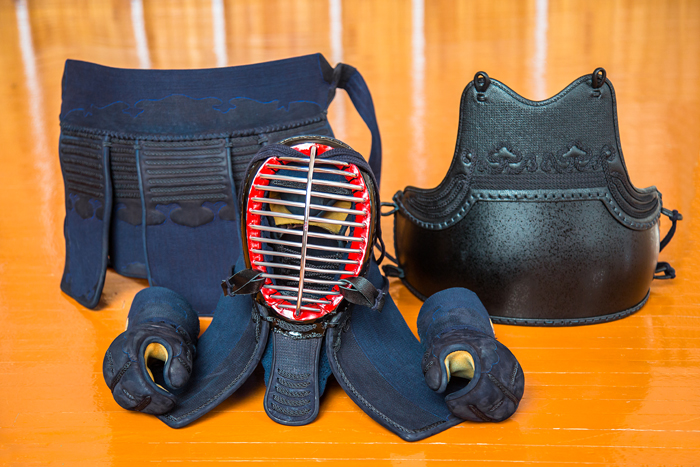
When practicing Kendo, practitioners wear traditional Japanese garments such as kendogi, keikogi, and hakama beneath their protective armor. These garments are part of the discipline’s heritage and practice, further linking Kendo to its historical roots and traditional Japanese culture.
In Kendo, safety is paramount, and the protective armor, or bogu, plays a crucial role in ensuring this. The bogu consists of four parts:
- The men is for head protection, which includes a metal grille for face protection, with padded fabric flaps safeguarding the throat, neck, and shoulders.
- The kote are for hand and forearm protection.
- The do is for torso protection.
- The tare is for waist protection.
Under the men helmet, practitioners wear a tenugui, a cloth that absorbs sweat and ensures comfort during practice and competition.
Alongside the bogu, the bamboo sword, or shinai, is an essential part of Kendo equipment. Some Kenjutsu practices previously allowed real swords; however, the Shinai was designed for Kendo to mitigate injury during training. The shinai consists of four bamboo staves, combined with leather fittings to ensure flexibility. Modern shinais are standardized in length and weight to conform to regulations, ensuring consistency during practice and competition.
Kendo’s Place in Japanese Culture and Beyond
In Japan, Kendo is a part of the cultural fabric, and just like many other Japanese martial arts, Kendo is proudly celebrated and practiced. After World War II, Kendo experienced a resurgence with the formation of the All Japan Kendo Federation, re-establishing its role as both a martial art and a sport. With about 1.66 million people actively practicing Kendo, it’s clear that the martial art holds a significant place in Japanese culture.
Kendo’s influence is no longer limited to Japan. It has extended its reach worldwide, and it is now possible to find Kendo practitioners in many countries. Organizations like the European Kendo Federation actively promote Kendo through organizing European Championships, seminars, and gradings, and by maintaining a European Dan Register and international relationships. Kendo’s international reach shows us the universal appeal and power of its philosophy.
Advancing Through the Ranks: Kendo Competitions and Grading
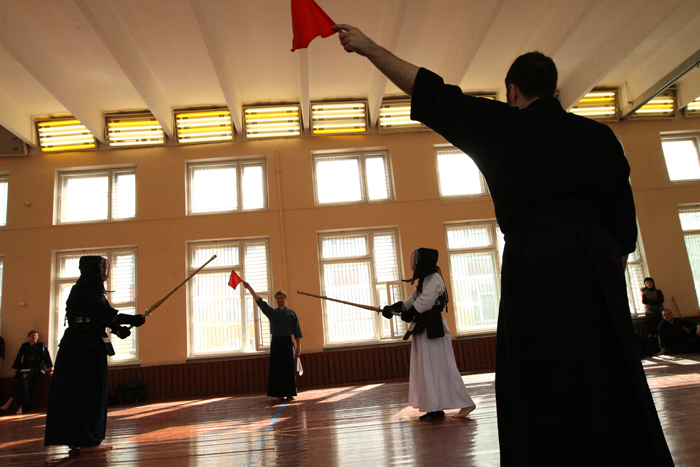
In Kendo, progress and proficiency are measured through a grading system. The dan grading system ranges from first-dan to tenth-dan, with kyu grades being the levels beneath dan. These grades serve as milestones in a Kendoka’s journey, indicating their progress and skill level.
Kendo competitions, on the other hand, present an opportunity to put one’s skills to the test. These competitions involve a specific set of rules that focus on scoring based on precise strikes or thrusts, drawing parallels to the sportiveness and emphasis on safety found in Olympic fencing.
Organizations like the International Kendo Federation (FIK) and the All Japan Kendo Federation play important roles in organizing popular events like the World Kendo Championships.
Comparing Sword Arts: Kendo vs. Other Martial Arts
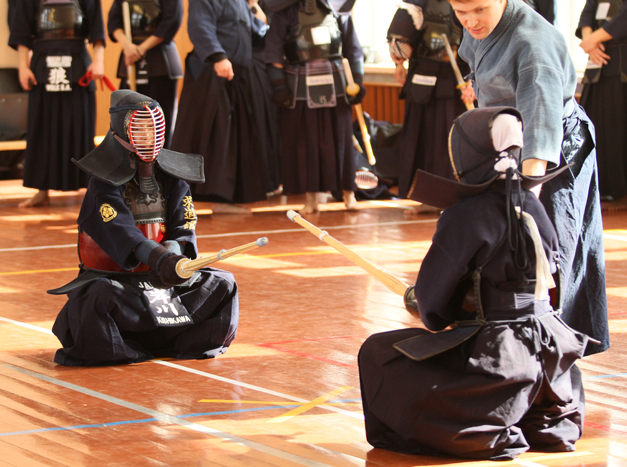
When comparing Kendo to other weapon martial arts, it’s important to note that every martial art has its own unique aspects and philosophies. Debates between fencing and Kendo highlight differences in competition rules that impact realism and techniques.
While both fencing and Kendo involve the use of a sword and require speed, precision, and strategy, their approaches to combat are very different. Fencing prioritizes speed and agility, while Kendo emphasizes spiritual growth, discipline, and the perfection of character. The differences in their competition rules and techniques reflect these distinct philosophies.
Despite these differences, both fencing and Kendo share common ground in their emphasis on respect for the opponent, the importance of mental discipline, and the pursuit of mastery. They are both paths towards self-improvement, demonstrating that the essence of popular martial arts transcends physical combat.
The International Reach of Kendo
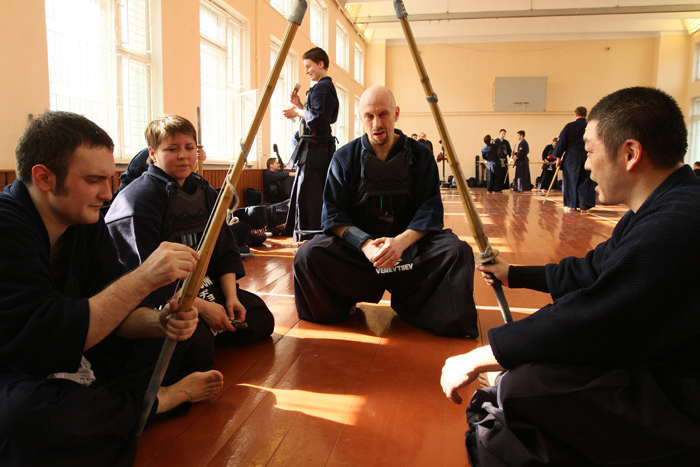
The spread of Kendo on an international scale is largely attributed to the establishment of the International Kendo Federation in 1970. This organization has played a crucial role in promoting Kendo internationally, organizing events that bring Kendo practitioners from all over the world together.
One such event is the World Kendo Championships, which take place every three years under the auspices of the International Kendo Federation. With over 40 countries participating, these championships highlight the sport’s widespread global popularity and the universal appeal of its philosophy.
Summary
Kendo is an incredible journey of self-discovery and personal growth, a path that aligns the mind, spirit, and body in a quest for self-improvement. From its roots in the Samurai traditions to its modern-day practices in dojos around the world, Kendo continues to inspire millions with its philosophy of discipline, respect, and continuous learning. Whether you’re a seasoned martial artist or a novice seeking a new challenge, Kendo offers a unique set of skills and techniques that develop the mind and body in a powerful way.
Frequently Asked Questions
What is Kendo?
Kendo is a Japanese martial art representing the way of life and the spirit of the Samurai, focusing on sword fighting techniques.
How is Kendo practiced?
Kendo is practiced in a dojo under the guidance of a qualified instructor, using a bamboo sword called a shinai and wearing protective armor known as bogu. It is important to learn from an experienced teacher to ensure proper technique and safety.
What is the purpose of Kendo Kata?
The purpose of Kendo Kata is to foster character development, moral teachings, and personal refinement by aligning the mind and body in harmony. It is a choreographed combat practice.
How is progress measured in Kendo?
Progress in Kendo is measured through a grading system that ranges from kyu grades to dan grades, marking a practitioner’s skill level milestones. It is a clear indicator of one’s advancement in the discipline.
Is Kendo practiced outside Japan?
Yes, Kendo is practiced outside Japan and has a significant international presence, with organizations like the International Kendo Federation promoting the sport worldwide.









